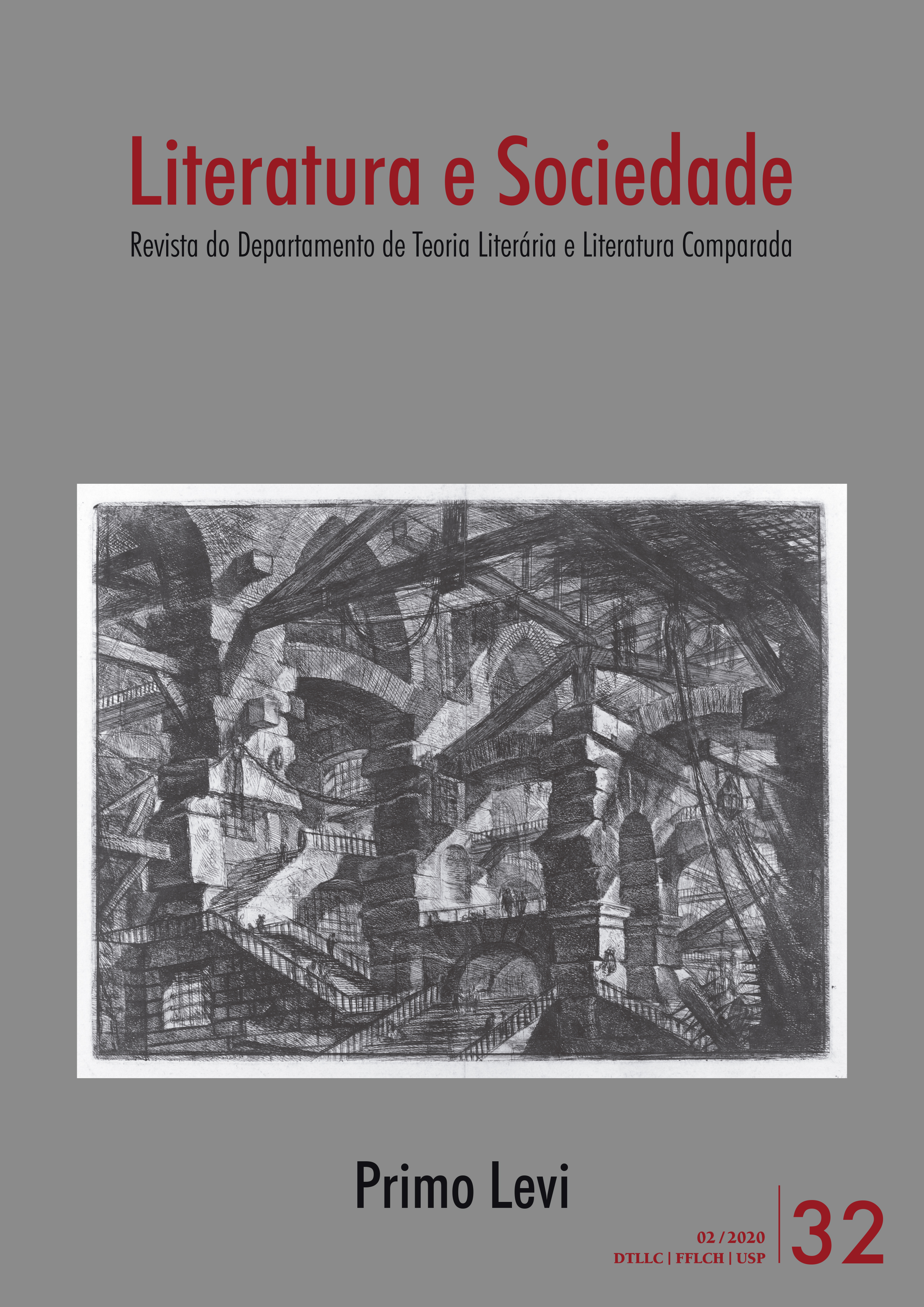A sombra dos submersos
DOI:
https://doi.org/10.11606/issn.2237-1184.v0i31p73-97Keywords:
Literature, Primo Levi, Saved, Drowned, WitnessAbstract
The division between the drowned and the saved is the key division of Primo Levi's worldview. The “internal submerged” (Di Castro) present in every survivor unfolds in the submerged as Doppelgänger, an internal voice oscillating between the metaphor of a persecutory shadow (present in his poetry) and the representation of his brotherly friend Alberto.
The urgency of the testimony is faced with the question of how to represent the drowned, the only ones who could return a truly comprehensive testimony. However, the writer finds a “surviving word” (Derrida) to probe the facets of shame, interrogate the ghosts of guilt and outline the “grey zone”.
Despite this insurmountable wound, Levi refuses the idea of a deserved privilege, nor does he need the comfort of divine providence: several factors contributed to his salvation, but the forces at work are chance and luck. Since Fortuna, as Robert Gordon points out, is a mythical force that our culture has always used to deal with the incomprehensible and uncontrollable reality, in the case of the survivor it fills the distressing absence of explanations; in Levi it becomes a support point to combat the feeling of guilt and to compose the literary representation of events.
Survival is, therefore, something "strange". Origin, evolution, adaptation, natural selection, clash between order and chaos converge in the short story “Carbono” and demonstrate that, after all, the pole of greatest attraction of all his production is the question: who survives and why?
Downloads
References
AGAMBEN, Giorgio. O que resta de Auschwitz. Trad. de Selvino J. Assmann. São Paulo: Boitempo, 2008.
ARENDT, Hannah. La banalità del male. Milão: Feltrinelli, 2009.
BELPOLITI, Marco. Primo Levi, di fronte e di profilo. Milão: Guanda, 2015.
BUCCIANTINI, Massimo. Esperimento Auschwitz. Turim: Einaudi, 2011.
COLERIDGE, Samuel Taylor. A balada do velho marinheiro, seguido de Kubla Khan. Edição bilíngue. Trad. de Alípio Correia de Franca Neto. São Paulo: Ateliê, 2005.
DERRIDA, Jacques. “L´istante della mia morte”. Aut-aut, n. 267-8, 1995, p. 38-56.
DI CASTRO, Raffaella. Primo Levi. “L’arte di un ‘testimone integrale’”. Kaiak. A Philosophical Journey, Apocalissi culturali, n. 2, 2015, publicado em 26/12/2015, p. 1. Disponível em: http://www.kaiak-pj.it/images/PDF/rivista/kaiak-2-apocalissi/DiCastro.pdf, acesso em: 13/07/2020.
DI MEO, Antonio. Primo Levi e la scienza come metafora. Roma: Rubbettino, 2011.
GORDON, Robert. ‘Sfacciata sfortuna’. La Shoah e il caso. (Lezione Primo Levi). Turim: Einaudi, 2010.
JUNG, Carl Gustav. Opere, v. 9, 2º tomo, Turim, Boringhieri, 1982.
LEVI, Primo. É isto um homem? Trad. de Luigi Del Re. Rio de Janeiro: Rocco, 1988.
LEVI, Primo. Se questo è un uomo. Notas de Alberto Cavaglion. Turim: Einaudi, 1997a.
LEVI, Primo. A trégua. Trad. de Marco Lucchesi. São Paulo: Companhia das letras, 2010.
LEVI, Primo. A tabela periódica. Trad. Luis Sérgio Henriques. Rio de Janeiro: Relume-Dumará, 1994.
LEVI, Primo. Se não agora, quando? Trad. de Nilson Moulin. São Paulo: Companhia das letras, 1999.
LEVI, Primo. I sommersi e i salvati. Turim: Einaudi, 2007.
LEVI, Primo. Os afogados e os sobreviventes. Trad. de Luis Sérgio Henriques. São Paulo: Paz e terra, 2004a.
LEVI, Primo. Tutti i racconti. Turim: Einaudi, 2005a.
LEVI, Primo. 71 contos de Primo Levi. Trad. de Maurício S. Dias. São Paulo: Companhia das letras, 2005b.
LEVI, Primo. L´altrui mestiere. Turim: Einaudi, 1998.
LEVI, Primo. Ad ora incerta. Milão: Garzanti, 2004b.
LEVI, Primo. Mil sóis. Trad. de Maurício S. Dias. São Paulo: Todavia, 2019.
LEVI, Primo. Opere, v. 1 e 2. Org. de Marco Belpoliti. Turim: Einaudi, 1997b.
LEVI, Primo. Conversazioni e interviste 1963-1987. Org. de Marco Belpoliti. Turim: Einaudi, 1997c.
PELLIZZI, Federico. “Asimmetria e preclusione”. In: NEIGER, Ada (org.). Mémoire oblige. Riflessioni sull´opera di Primo Levi. Labirinti, n. 120. Trento: Dipartimento di Studi Letterari, Linguistici e Filologici, 2009.
SCARPA, Domenico. “Chiaro /scuro”. In: BELPOLITI, Marco (org). Primo Levi. Riga, n. 13. Milão: Marcos y Marcos, 1991.
TREVI, Mario. ROMANO, Augusto. Studi sull’ombra. Milão: Raffaello Cortina editore, 2009.
TROCOLI, Flávia. “Entre quedas e buracos”: a contingência, o não todo e o não idêntico na escrita de Ruth Klüger. Trivium, Ano II, Ed. II, 2° semestre de 2010, p. 460. Disponível em:
https://pt.scribd.com/document/332267567/2-Entre-Quedas-Buracos-Contingencia-Nao-Todo-Nao-Identico-Escrita-de-Ruth-Kluger, acesso em: 13/07/2020.
Downloads
Published
Issue
Section
License
Copyright (c) 2020 Literatura e Sociedade

This work is licensed under a Creative Commons Attribution-NonCommercial 4.0 International License.


